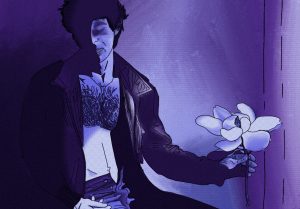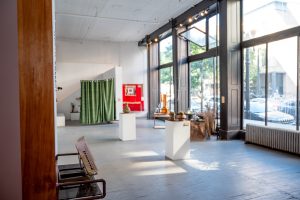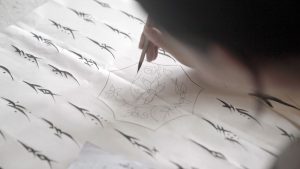For years, Black women directors have made up a small percentage of film releases. Their inclusion in awards show nominations and wins are an even lower proportion. The Dayton Black Women’s Film Festival (DBWFF) is a platform geared towards remedying the need for behind-the-scenes representation, showing that Black women can produce their own narratives. The experience of watching as many as sixteen short films directed by Black women in a single evening at the movie theater more than triples what’s released during a year of predominantly mainstream white male-helmed cinema. The first annual DWBFF premiered on May 16, 2024 at the Neon Movies in Dayton, Ohio. The one-night event aired ten films from across the globe, three works from local Wright State University students, and three films from the first Bloom Award recipient, Aisha Ford. The Bloom Award honors burgeoning filmmakers with Dayton ties.
I spoke with six of the fourteen Black women filmmakers over Zoom: Angelina Mitchell, Aisha Ford, Amira Jackson, Che Marcheti, Kierra Payne, and Tiara West.
* * *
Angelina Mitchell, I Want You director and founder of the Dayton Black Women’s Film Festival (DBWFF), is a filmmaker and current Wright State University film student born and raised in Dayton, Ohio.
Janyce Denise Glasper: What was your jumpstart to becoming a filmmaker?
Angelina Mitchell: In Meet Me in St. Louis, directed by Vincent Minnelli, I remember Judy Garland singing “The Boy Next Door.” I thought, ‘how can I make something this magical?’
JDG: Your film I Want You begins tenderly and sensuously, then an argument escalates before the tenderness resumes. What is going on?
AM: I Want You is based on a real conversation. Any time the red and green [coloring appear in the film], it’s not actually happening. It’s a visual representation of her desire for him. She wants to believe that there could be something different. He doesn’t want anything else.
JDG: Are your films often autobiographical?
AM: Absolutely. I have always been raw about my experiences. You Changed Me, my first film made with Aisha Ford, was about my first experience with a guy. It’s raw and poignant, exactly bar for bar what happened in the situation. I made another film about an alien little girl. As a child, I felt like an outsider and thought it would be cool if I really was one.
JDG: Can you talk about having Black women behind-the-scenes and the historical inconsistencies regarding that? There’s many considered “Black films” without Black people behind the camera—just Black bodies on screen.
AM: To direct your own story is liberating. The reason that people connect to mine is because they have experienced [stories like mine]. Black women behind the camera make things more tangible. Hollywood considers the first Black blockbuster to be Birth of a Nation [directed by D. W. Griffith]. We still learn about it in film school. Black women have to create large blockbusters or have this long, illustrious career to even be considered somebody who has made a mark within the industry.
JDG: If you could create a curriculum of ‘Five Essential Black Women Directed Films,’ which would you include in your mock class?
AM: Selma—Ava DuVernay provides a direct human connection to Martin Luther King Jr. and makes sure Coretta is seen as well. A.V. Rockwell’s A Thousand and One has a breathtaking twist at the end. Raven Jackson’s All Dirt Roads Taste of Salt blew my mind—it’s an absolutely brilliant visual story. Gina Prince-Blythewood’s Love and Basketball is realistic: toxic, but that’s life. Cheryl Dunye’s Watermelon Woman formulates a whole history within a span of [a film]. Honorable mention: Daughters of the Dust by Julie Dash. It’s so heavy and so spiritual. Every Black woman should watch.
JDG: What’s the significance of having the Dayton Black Women’s Film Festival happen now?
AM: DBWFF is relevant and needed because we still don’t have [enough] platforms specifically tailored to celebrate, uplift, and encourage us. I wish there could be one in every city and state.
JDG: Where do you see yourself in your filmmaking future?
AM: I plan to continue making movies for Black women who don’t see themselves on the big screen and ensure that the Dayton Black Women’s Film Festival grows.
* * *

Aisha Ford, Royals, Be A Fish and Cherry Lemonade director, Dayton Black Women’s Film Festival Bloom Award Honoree, was raised in Dayton, Ohio, received a BFA in film at Wright State University. She is currently based in New York City.
JDG: Can you describe your creative process? What’s the first thing you do on a new project?
Aisha Ford: First, I write: based on a conversation I heard, a story I like to tell over and over again, something I saw on the news, or a topic that I want to explore.
JDG: Which Black women filmmakers do you look up to?
AF: I love Chinoye Chukwu and up and coming filmmakers Raven Jackson [All Dirt Roads Taste of Salt], Savanah Leaf [Earth Mama], and Nia DaCosta [Candyland]. I try to follow their trajectory, the routes they’re taking.
JDG: What does receiving DBWFF’s Bloom Award mean to you?
AF: It means a lot because it’s in a space where I feel celebrated, in a space where we can watch films created by us, experiencing our stories and connecting.
JDG: What are your feelings regarding Black women representation behind-the-scenes as well as on screen?
AF: Black women bring authenticity and nuance to our projects. We make our characters human.
JDG: Can you talk about Cherry Lemonade?
AF: Well, Cherry Lemonade was a part of the Women in Media [CAMERAderie] Program in 2019. There were two other women of color directors as well. Sometimes the process was knowing what they were doing— like we were guinea pigs. Overall, I’m happy about the film’s outcome. The majority of my crew were Black women— my camera operator, my furniture designer, my location manager, my AD.
JDG: That brings me to my next question—the importance of collaboration?
AF: There’s no ‘I’ in ‘team.’ I love working on a crew that can say ‘hey I think you should do this.’ We collaborate with each other, sharing ideas for the shot, for what this character should be doing, for particular locations we should shoot at. Together, we’re all trying to make the best film that we can.
JDG: How much does the film change from the writing process to what is on screen?
AF: A majority is the written script and some is improv. Actors—especially if they know their character— can give me something that I didn’t think about. In editing, there are changes—cutting scenes out that don’t go along with the film’s pacing.
JDG: Any final inspirational remarks?
AF: Every person has a unique story to tell that matters. You have to learn to negotiate what you want as well as know when to say no.
* * *
Amira Jackson, Cycle of Women director, is a theater/film double major graduate of Muhlenberg College, born and raised in Pittsburgh, Pennsylvania.
JDG: What was your jumping point into becoming a filmmaker?
Amira Jackson: Princess and the Frog and Fences with Denzel Washington and Viola Davis, which was filmed in Pittsburgh. I remember driving past the set, seeing the crew. I convinced myself that I wanted to make a movie, that it probably wasn’t that hard. [laughs] Now, I’m obsessed.
JDG: Tell me about your film Cycle of Women.
AJ: I made it last year while studying abroad in Prague. Before, I worked on We Are Proud To Represent, a stage production [adapted from] Jackie Sibbies Drury’s play about the [1884-1914 Herero and Nama] genocide. African stories are often lost in translation, in history intentionally. Drury inspired me to make a film version [of We Are Proud To Represent] in Prague, a full circle moment.
JDG: Cycle of Women also metaphorically highlights contemporary Black women pregnancy plights.
AJ: Yes. Although Cycle of Women is sad and not the best of endings, it’s a prominent story that women resonated with. We’re still not cared about, not believed medically.
JDG: Do you see yourself making more films leaning towards the horror lens?
AJ: Yeah. My most recent film has a psychological thriller aspect. I’m interested in the unexpected, what’s jarring, what makes something scary versus uncomfortable. What is the difference? How are they the same?
JDG: What is the role of collaboration in filmmaking to you?
AJ: It’s hard to make a movie. Freshman-me thought it was easy. By senior year, I realized that wasn’t true. I could not have made Cycle of Women by myself. My [Director of Photography], Christian Kelly kept me sane on set. You have to recognize [the value of obtaining] other perspectives. A film has many embedded ideas and [uses everybody’s input]— directing, being the DP, running sound, and writing a script.
JDG: What are your thoughts regarding underrepresented filmmakers behind-the-scenes?
AJ: I ensure that there are Black, brown, and marginalized bodies in front and behind the camera. It’s key to how the story is told. For example, someone must know how to light Black skin. I can’t always break that down to someone who might not understand what it means to not be lit correctly and how that is inherently rooted in the fact that [historically] Black and brown people weren’t welcomed on sets. Cycle of Women—being in the Czech Republic—I could only get away with so much. Previously, in another work, I was the director, my friend Desiree was my AD, and my friend Rachel was the second AD. We were the powerhouse Black women running the set—exactly what I dreamed about.
JDG: How are you regarding being a part of the first Dayton Black Women’s Film Festival?
AJ: I’m absolutely honored. The DWBFF creates space for films like mine and women like me.
JDG: What’s next for you after graduating?
AJ: I’ll be moving to Cincinnati for the year as an acting apprentice at the Ensemble Theatre. I’m not done with filmmaking yet—just considering the financial side.
* * *
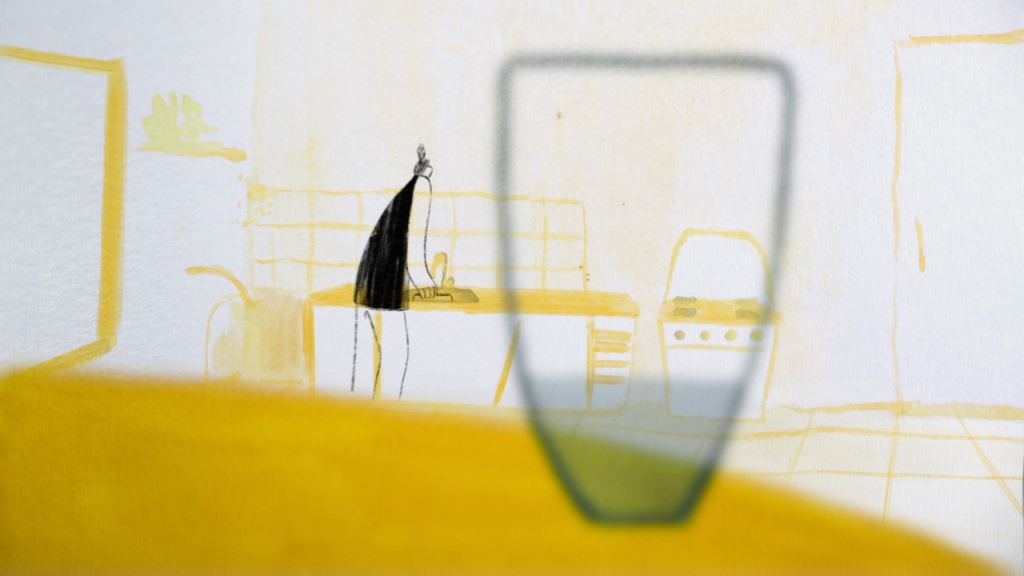
Che Marcheti, Pressure director, is based in Brazil and has been working with storyboards for eighteen years.
JDG: Can you tell me more about your artistic background? You studied animation?
Che Marcheti: I graduated in graphic design and started in animation with my art book, Brazilian Animation Artbook [chronicling 100 years of animation in Brazil]. I worked with storyboards in feature films and television series and experimented with watercolor, 2D animation, and traditional animation. For Pressure, I did the art direction, illustrations, and animation. The stop motion was made by an amazing artist and animator here, Cassandra Reis.
JDG: Let’s talk about Pressure. The simplistic animation is beautiful and has a quiet, simmering tension.
CM: Pressure came to me first as an emotion. It was a difficult time in my life. I felt very anxious, very nervous about my professional side. I needed to put it into my art. It’s a story about a woman living day-to-day—holding inside too much until [the events of the film] came out from nowhere. Sometimes being in the industry as a Black woman is difficult, putting our art out there, being seen and respected. At the time, my feelings were burning out. Nowadays I’m treating my mental health and I’m good for now.
JDG: First and foremost, you must take care of yourself. That brings the question: what is the importance of collaboration to you, especially when under extreme duress?
CM: In animation, it’s very important. A work team brings things that I didn’t see before and helps me to become better. To do everything alone is too tough. I almost made [every part of Pressure alone] because I didn’t have funds to [produce] it. At a certain point, I realized that I couldn’t do it alone. I did this investment in some artists—I had a really small amazing crew. They helped me to finish. I mixed techniques—2D, traditional. Digital is [the medium that makes] the main character. The water and backgrounds are watercolor. We needed to put all of this together in the final version. So, I called the professionals of the composition: Nana Lahóz and Gabriel Gitar. For the sound, I called Confraria de Sons & Charutos.
JDG: How much of you is represented in Pressure?
CM: It is very personal. With the anxious character, I wanted to bring a feeling of ignoring your emotions, holding inside until they exploded out of control.
JDG: What are your thoughts regarding Black women in animation and the lack of behind-the-scenes representation in this field?
CM: We need more representation, more space and opportunity for showing our art and projects. In this industry, we have to guarantee that Black artists receive funding. It’s difficult to be heard.
JDG: How do you overcome rejection and disappointment?
CM: I cry, freak out, and then exercise. I put my all into exercising. This week, actually, I realized that I could manage these feelings at the gym. I come down and won’t let them gut me. I will go through another battle more powerful and more focused.
* * *
Kierra Payne, Red Flags director, is from Durham, North Carolina and currently based in Atlanta.
JDG: What was your primary interest in film?
Kierra Payne: I was a latchkey kid, filling space by watching movies—no parental controls back then—and acting since five-years-old. As an adult, I would go to the movies alone. In undergrad, I studied mass communications, learning a lot about video and radio.
JDG: Can you tell me about Red Flags?
KP: Yes, Red Flags, my first film, is this idea of Black women seeming to have it all together. We can’t make any bad decisions or be mediocre. In the film, [the protagonist is] doing well for herself—writing in her journal and above it. Then [her ex-boyfriend] is waving this “I’m trash, I’m a mess” red flag and she’s like, ‘wait, is that him? I’m going back to him.’ I want to show that we are not perfect. We’ve all been there. She makes these decisions because she is human.
JDG: Tell me about the role of collaboration. You co-directed Red Flags with Tiara West.
KP: Black women aren’t gatekeepers. We team up with our resources and our talents. We make things happen. Honestly, collaboration is the only way that we’re gonna be able to succeed. You need a team. You need support. Our society reinforces individualism. Even with my child, everyone’s like, ‘don’t hold him too much.’ They’re reinforcing independence before we’re ready.
Tiara and I met last year. She is a filmmaker to watch for. I wanted to make my own first film—short and quick, something that I’ve already been working on. Tiara, who’s very thorough and particular, walked me through the process. We did every part of Red Flags together: the score, the production.
JDG: What are your thoughts regarding Black women representation behind-the-scenes? Do you see that evolving?
KP: I do see it changing. Black women will not be held back or held down. We are very ingenious and inventive, the most educated. You see Regina King directing and executive producing. In this country, they’re not going to give us anything. We have to take it. We’ll [either] break the doors down or create our own.
JDG: Where do you see yourself in the future as a filmmaker? What’s next after Red Flags?
KP: So, I’ve had a baby. Right now, I am developing ideas and taking courses, developing my skill set. I’m also an actor (voiceover, theatrical, and commercial work) signed with two agencies. I have many women-centric stories to tell, narratives away from the sapphire, the mammy, the welfare queen, and angry Black women tropes. I’ve been working on a historical fiction about a Black girl who discovers she has superpowers from an ancient line of Queens.
JDG: Do you have any thoughts regarding the first Dayton Black Women’s Film Festival and what the future of this festival means to Black women filmmakers?
KP: I think that this is a wonderful opportunity. I am very appreciative for being among other wonderful Black women filmmakers in this inaugural class. The more we have festivals for us by us, the more people won’t have a choice to ignore us.
JDG: It’s so important to have Black women behind the camera. It’s not enough having Black bodies on screen—they must be behind-the-scenes as well.
KP: Oh, absolutely. And in different roles. I would love to see a Black woman gaffer and a whole Black film crew.
* * *
Tiara West, Melanie & Kyle director, Red Flags co-director is from Baltimore, Maryland, and currently based in Atlanta, Georgia.
JDG: Tell me about your interest in film.
Tiara West: In Baltimore, I had an acting coach and went to an all-Black theater. When I was younger, I had a DVD player and watched the same films repeatedly. In Georgia, I took courses, read books, and watched films to understand the tone and reason. I love being able to bring my imagination to life.
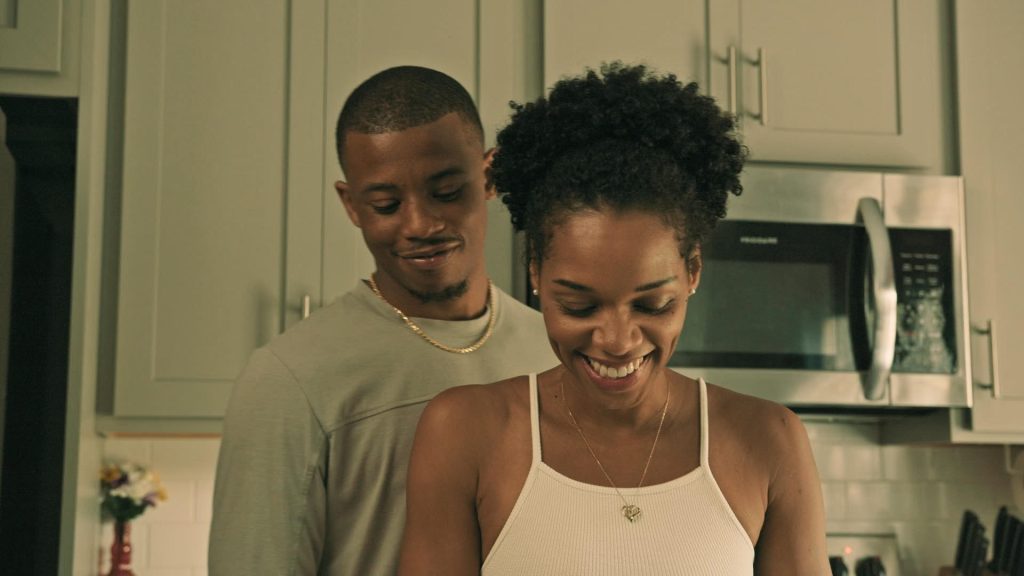
JDG: Can you talk about Melanie & Kyle and the co-directed Red Flags with Kierra Payne?
TW: Both were small budget projects with great crews, shot by the same person. Melanie & Kyle—a romantic piece—is my baby. I wanted to do a short film about two people in love and thought that poetry would be easier due to the budget. A mutual friend told me to reach out to Ashani Roberts, an amazing actress and poet. I gave her a script breakdown. She sent me poetry. The visuals were based on three references: Love Jones [directed by Theodore Witcher], Really Love [directed by Angel Kristi Williams], and Premature [directed by Rashaad Ernesto Green].
After we met at a networking event, Kierra reached out to me about collaboration, pitching Red Flags to me. I liked the idea.
JDG: You were talking about poetry earlier and Love Jones, a film that utilizes Sonia Sanchez’s words. How important is poetry’s role in Melanie & Kyle and Red Flags?
TW: Red Flags, a narrative piece, was more about truth, not poetics. With Melanie & Kyle, I thought the poetry would be the downfall—a hit or miss—especially when doing a love piece with no full-blown dialogue. The film came out ten times better than what I saw in my head.
JDG: What is the importance of collaboration to you and the importance of Black representation onscreen and the behind-the-scenes?
TW: My films are my babies. I carry them for a little over nine months, then birth them, and make sure that they can become their own beautiful adult selves. You shouldn’t want to do a film alone. With smaller budgets, you will see some people’s names listed ten times. They were wardrobe, PA, hair, etc. My Melanie & Kyle team went to war for me throughout the entire project. Red Flags was the same [process].
I love my people to the fullest. Most of my film crews are Black. That’s my preference. I felt comfortable and safe working with people who look like me and understand me.
JDG: What do you envision in your filmmaking future?
TW: I want to continue making beautiful Black films, win Oscars and Emmys, and work with Issa [Rae], Ava [DuVernay], and Spike [Lee]. My next project Sam is about a young woman who ages out of foster care. She’s an adult who has to move in with her estranged, older sister because there’s nowhere else for her to go.
It is harder for Black women in cinema. I learned that you have to believe in yourself more than anybody. It’s always a bonus when someone else believes in you and you surround yourself with other creative Black women. All of my friends are filmmakers. If I’m in a room with other directors, I don’t walk in thinking I’m better. I walk into that room knowing that I belong there.
* * *
The second annual Dayton Black Women’s Film Festival will be a multi-day event held May 15-18, 2025 at the Neon Movies. It will conclude with a special twenty-fifth anniversary screening of Gina Prince-Blythewood’s Love & Basketball. In addition to the Bloom Award, the upcoming Hattie McDaniel Gardenia Award—in ode of the first Black performer to win an Oscar—will be given to a Black woman filmmaker who breaks glass ceilings in the film community.
The early bird FilmFreeWay submissions for DBWFF opened on October 1, 2024.
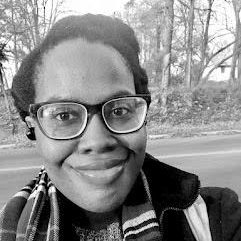
About the author: Janyce Denise Glasper is a Dayton, Ohio based multidisciplinary artist, writer, independent scholar, focusing on highlighting past and present underrepresented, marginalized voices through text. Her essays and short stories have appeared in ÆQAI Journal, Belt Magazine, RaceBaitr, Black Youth Project, and other publications. She received an Andy Warhol/Creative Capital Art Writer Grant for Short Form Writing, a fiction fellowship from Roots, Wounds, & Words: Words of Resistance + Restoration, and additional support from Authors League Fund and Lampblack Direct Aid. Currently, she is a contributing arts writer for the Philadelphia-based publication artblog.

